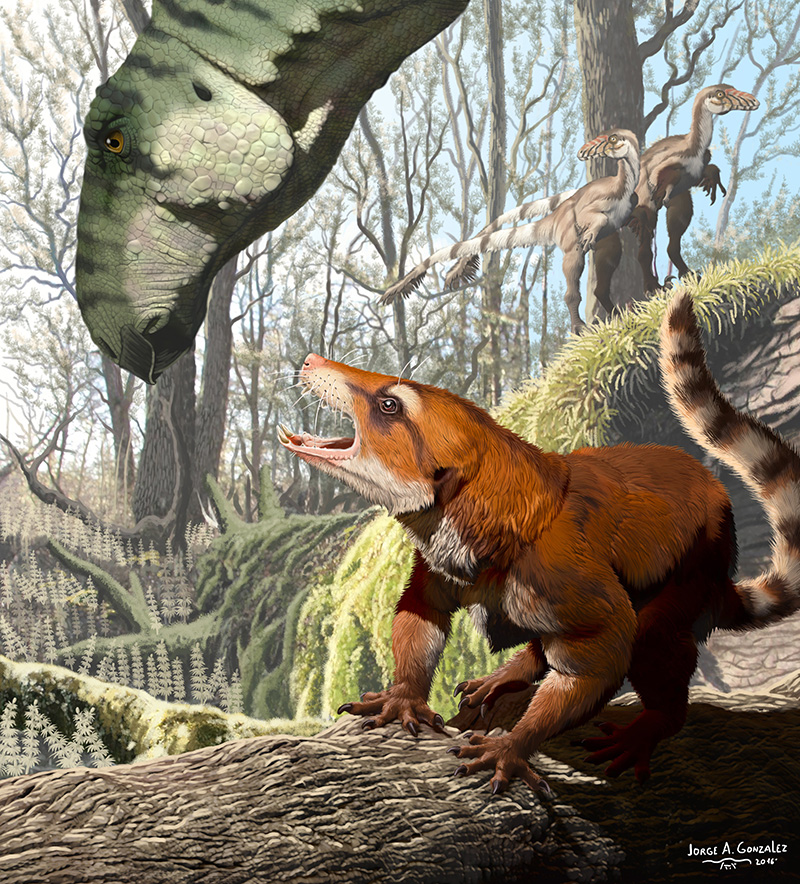
(Keck School of Medicine of USC/Jorge A. Gonzalez)
The discovery also changes the time frame during which extinct mammal ancestors, called Haramiyida, dispersed across the continents.
Most of the haramiyidan fossils that scientists have uncovered so far have been from the Triassic and Jurassic of Europe, Greenland and Asia. But this one was the first large skull from Early Cretaceous (145 to 101 million years ago) North America.
This means haramiyidans must have existed globally during the Jurassic-Cretaceous transition.
It follows that the corridors of migration between Pangea's landmasses must have remained intact right up through the Early Cretaceous.
According to the continental drift hypothesis, Pangaea began breaking up about 225-200 million years ago. The new study suggests the divide of Pangea took about 15 million years longer than previously thought.
While the corridors of migration were open, early mammal precursors must have migrated from Asia to Europe, and then into North America and the major Southern continents.
Fig2 5globes(US Geological Survey)
The researchers placed Cifelliodon in the subgroup Hahnodontidae, which, up until this point, was only made up of Cretaceous species from Northern Africa.
"But it's not just this group of haramiyidans," Huttenlocker said.
"The connection we discovered mirrors others recognised as recently as this year based on similar Cretaceous dinosaur fossils found in Africa and Europe."
The Cifelliodon skull is just another piece in the puzzle.
The study has been published in Nature.